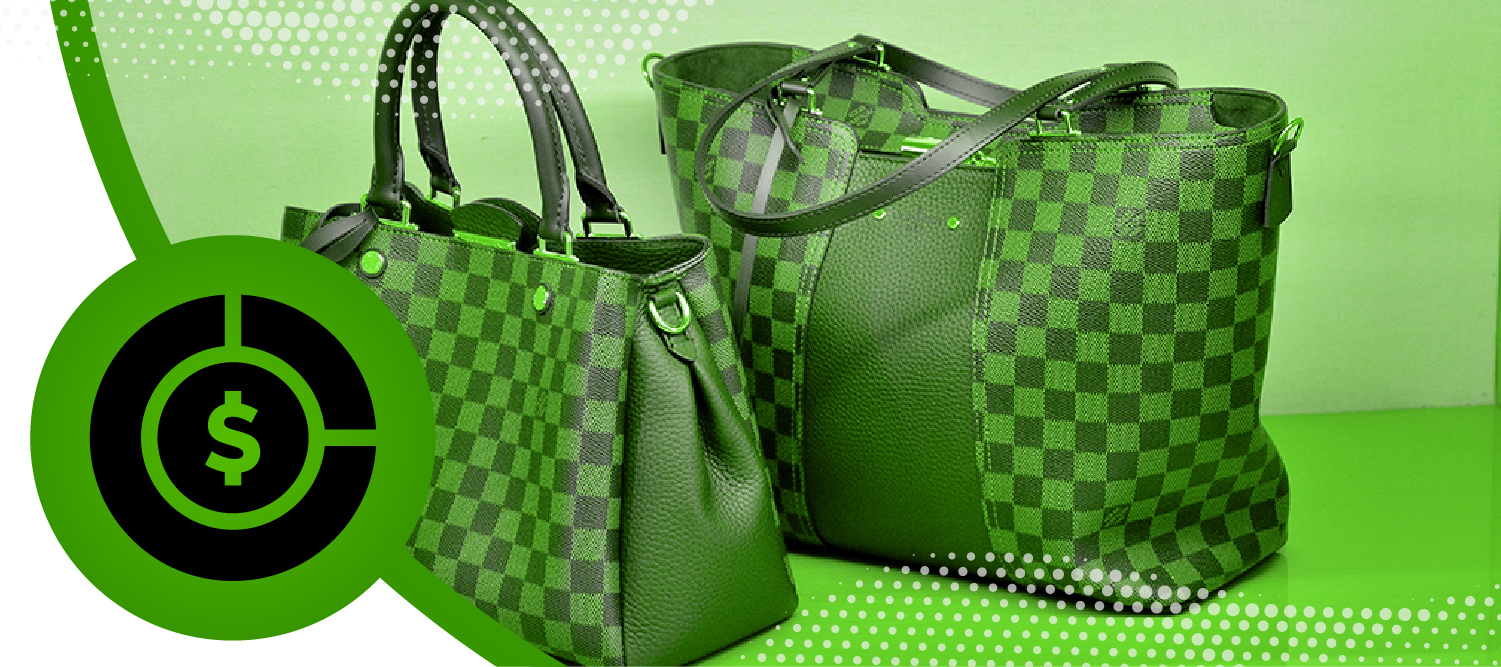Inflation is changing luxury consumers’ behavior: social media audience research reveals how

A whole generation of adults is entering their first-ever recession as working professionals. As they’re starting to grapple with the impact of inflation, the world of luxury is keeping a watchful eye. How will the rising cost of living affect luxury consumers’ behavior and spending habits? Which goods and services will they prioritize? Most importantly, will luxury begin to feel the pinch — and what can the industry do to prepare?
To get the answers, we’ve gathered Twitter conversations from people who posted about luxury goods in the context of the cost of living crisis. But we wanted to push this one step further: with some framing this recession as a “she-cession”, we decided to compare tweets from users who identify as men and those who identify as women. Are male and female luxury consumers really responding differently to the squeeze on disposable incomes?
Using the Relative Insight text analytics tool, we turned our Twitter data into highly nuanced insights on customer sentiment across these two audiences. The conclusion? Male and female consumers share similar considerations… but there’s more to the story when you zero in on the details. Here are three key insights that chart the direction for luxury as consumers begin to feel the pinch; and a roadmap for how luxury brands can stay relevant in a volatile market.
Re-thinking “ethical”
Themes of sustainability and consumerism have been setting the tone of conversations around luxury for a while now. But with the skyrocketing cost of living, we are seeing in real-time how these ethical trends evolve to adapt to new contexts.
Environmental anxiety on the rise
Compared to the “evils” of fast fashion, luxury labels have long been considered a more ethical option. Our analysis of luxury consumers’ behavior shows that this positive sentiment around luxury is still present — but now tainted with anxiety. Twitter users are concerned that luxury goods are becoming unaffordable and wonder what long-term impact this will have on the environment.
Ethical production and sustainability are particularly top of mind amongst women, who refer to the topic of environmentalism 6.3x more often than men. This includes mentions of the word ‘sustainable’: “luxury brands are inherently more ethical and sustainable than fast fashion.” There were also more mentions of ‘pollution’: “fast fashion is destroying the ecosystem with pollution, but people just don’t have the choice now.”
Consumerism under the microscope
The cost-of-living crisis also stirs a different kind of ethical consideration: questions around economic inequality and consumerism. Our text analysis shows that these issues are particularly important to the male audience, who mention the topic of politics 1.9x more often than women, including the use of words such as ‘capitalism’ and ‘socialist’.
“There’s no ethical consumption under capitalism.”
“Working with luxury goods, having your own business and being socialist [is not] dishonest.”
These and similar sentiments suggest an intriguing brand messaging direction for the luxury world. With political persuasion becoming more relevant in online conversations around luxury, is there an opportunity (or even a need) for a high-end brand to project an inherently left-leaning personality? And is it even possible to navigate the pitfalls of politically-involved brand positioning in an authentic and relevant way? An in-depth audience analysis might offer some answers to that.
“Luxury” is in the eye of the beholder
There’s one clear trend concerning luxury consumers’ behavior: as inflation continues to rise, consumers are starting to re-evaluate their purchasing habits. Our text analysis shows that there is a clear trend for both male- and female-identifying audiences to question what luxury means and whether it’s delivering the right value for them.
Our social media research also shows, however, that men and women are doing this in different ways.
Tough competition
For men, the question of value quite clearly comes down to how a given product or brand fares against its immediate competition — they refer to the topic of competition 10.8x more often than women.
Comments like “Tesla needs to remain an aspirational brand to compete against other electric models,” or “I remember when designer clothes were […] not just trying to compete with fast fashion”, indicate that men are scrutinizing how their favorite brands relate to competitors… and often, the conclusion is not favorable.
As wallets are squeezed, the brands’ ability to set themselves (and their customers) apart from the crowd might be the determining factor in securing brand loyalty and product sales.
Shopping priorities shift
Meanwhile, our analysis of luxury consumers’ behavior shows that women are scrutinizing luxury brands and products very differently. Rather than comparing luxury products to others on the market, they are benchmarking quality and creative innovation — and they have unapologetically high standards.
“They’re spotlighting the novelty care tag […] rather than the unremarkable design.”
“The design now is modelled after Grogg boots for workers, so buying them literally doesn’t matter.”
Overall, women mention the topics of design and craftsmanship 1.2x more often than men, showing that for this audience, quality and design are essential markers of luxury. When they aren’t deemed to be there, the value proposition crumbles.
What we can clearly see from both audiences is that luxury consumers are savvy. The cost-of-living crisis is forcing people to analyze the true value proposition of their favorite brands. In this climate, luxury brands will need to think more clinically about their offering: how are they different from competitors? And how are they conveying the detail and value-add?
The material and the ethereal: how each audience defines luxury
Our text analysis of luxury consumers’ behavior shows that men and women bear similarities in the general ways in which they approach luxury – placing increasing importance on ethical decisions and becoming more rigorous when evaluating brands. But as the audience insights show, there is one key way in which the audiences differ: the products and services they define as luxury.
Social media audience research suggests that when men discuss luxury, they refer to material objects far more often than women. They are more likely to talk about sports goods like smartwatches, clothing, and e-sports (1.6x more mentions); property (1.3x more mentions); as well as words ‘watches’ and ‘cars’. Here, there is evidently a physicality and tactility in the attributes this audience considers to be ‘luxury’.
But when we look at the data for female Twitter users, we see a different story. The audience analysis reveals that women tend to engage in conversations around how luxury goods make them (or others) feel and look, rather than the product’s physicality.
They are also 1.4x more likely than men to mention beauty products (skincare and cosmetics), and often do this while talking about their own and others’ bodies: “Kim K has a million dollars’ worth of shoes and jewelry on her body.”
The way that these audiences talk about luxury goods is revealing. While male audiences are more likely to be attracted to luxury products for physical and tactile reasons, women seem to attach more value to the intangible, aesthetic, and emotion-based aspects.
These insights shine a light on the road ahead as brands compete for reducing disposable income. As people become ever more money-conscious, these contrasting definitions of luxury may be a crucial piece of intelligence to help brands position themselves in a relevant way for their audiences.
Brands don’t have the luxury of continuing with business as usual
There are few industries exempt from being impacted by rising inflation — and the luxury industry is certainly not one of them. Changing luxury consumers’ behavior, increasing product scrutiny, and decreasing brand loyalty, are — according to our social media research – just a few of the factors that the luxury industry will have to contend with. As income becomes less and less ‘disposable’, luxury brands must respond to customer shifts in order to stay relevant.
For one thing, brands would be amiss to write off the cost of living crisis as a “she-cession”. Our audience analysis shows that men are just as responsive to the squeeze on incomes as women – and it’s already impacting their purchase decisions.
At the same time, the shift in the buying mindset manifests differently in the two audience segments. Understanding these differences in luxury consumers’ behavior will be crucial for the luxury industry, as brands use their insights to tailor marketing, inform precise brand positioning, and create products that exceed the ever-changing expectations of customers.
